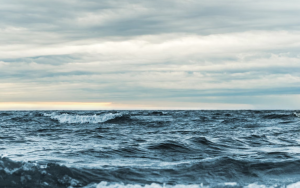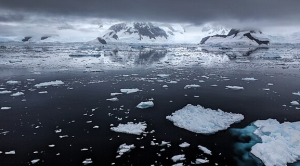
1,700 Lives Lost by a Silent Gas — Why?
Think of a soda bottle: when closed, the carbon dioxide (CO₂) dissolves into the liquid under pressure. But when you open it, bubbles rush out. Deep lakes near volcanic areas can behave similarly—except instead of fizz at your party, you get a cloud of invisible gas that can suffocate an entire village.
In India or Nigeria, many rural communities live near hills, crater lakes, or volcanic areas. They rely on water for irrigation, drinking, or fish. If a lake suddenly releases gas, the consequences can be deadly. Scientists call this rare event a limnic eruption—“limnic” from limne, Greek for lake.
Before Lake Nyos, many people thought deep lakes were stable, quiet, and safe. But the Nyos disaster taught us otherwise.
The Research Story
On August 21, 1986, Lake Nyos (northwestern Cameroon) let loose a cloud of CO₂. That gas traveled down valleys, displaced normal air, and suffocated people and livestock within a radius of roughly 25 km. The death toll: ~1,746 people and ~3,500 animals.
Scientists scrambled to explain. How could a lake suddenly release that much CO₂? Geologic and chemical studies revealed that beneath the lake lies a volcanic system that steadily leaks CO₂ into the deep water. Because Lake Nyos is meromictic—its layers do not mix—the deepest zone, called the monimolimnion, slowly and safely accumulates dissolved CO₂ over time. Trouble begins when something disturbs this balance: a landslide, heavy rains that overturn the water layers, or even a minor seismic tremor. Once a small amount of CO₂ bubbles upward, it sets off a “chimney effect,” pulling more CO₂-rich water toward the surface and releasing even more gas in a runaway chain. Researchers described their “aha” moment when they noticed the parallels: the way bubbles drive this eruption is much like how geysers or volcanoes channel magma—once a path opens, the process feeds itself and accelerates dramatically.
In recent years, deeper measurements have utilized sensors (for conductivity, pH, and sound speed) lowered by ropes to map the amount of CO₂ remaining in the deep zone. The results help refine risk assessment and inform mitigation strategies.
What About Methane?
Although the Nyos event was almost entirely CO₂, methane (CH₄) also features in the broader story of gas-charged lakes. In lakes like Lake Kivu (on the border of Rwanda and the DRC), both CO₂ and methane accumulate, making the risk more complex. Methane is especially dangerous because it’s more flammable and acts as a powerful greenhouse gas if it reaches the atmosphere.
So, lessons from Nyos apply to methane-rich lakes too:
- Monitoring how gases dissolve, identifying stable and unstable layers, and understanding what triggers mixing is essential.
- Controlled degassing (slow release) is safer than letting a gas cloud erupt violently.
Impact & Real-World Implications
For communities in Africa, Asia, Latin America
Many volcanic or crater lakes exist in densely populated regions. Farmers, fishermen, and villagers may live downslope, in valleys. A sudden gas burst could silently take a life without warning. If you are a student or early-career scientist in such regions, here’s why this matters to you:
- Risk mapping: You might help identify lakes that are “silent threats.”
- Monitoring design: Low-cost sensors for gas concentration, water layers, or acoustic signals can be deployed.
- Degassing intervention: The Nyos solution involved installing vertical pipes (starting in 2001) that siphon deep water to the surface. As pressure drops, CO₂ bubbles out gradually—a “controlled burp” instead of an explosion.
- Climate links: In warming climates, thermal changes or shifts in rainfall patterns could destabilize stratified lakes more easily, thereby increasing the risk.
In Cameroon, ongoing degassing has reduced CO₂ levels and now keeps the system in balance—taking out as much gas as seeps in naturally.
We once believed deep lakes were silent, stable repositories. However, Nyos demonstrated that if gases accumulate quietly over decades, a sudden trigger can convert that silence into a deadly surge. We thought “no mixing = safe”—but the data say “timeout bombs hidden underwater” can exist.
Even today, many lakes are unmonitored. In regions with limited scientific infrastructure, awareness is the first defense.
Keep Curiosity Alive
As you dive into this, you may ask:
- Could a small tropical crater lake near your community harbor dissolved methane or CO₂?
- What sensor would you deploy first—gas probe, acoustic detector, temperature loggers?
- If you were on the mitigation team, would you test a degassing pipe or an automated floating sensor?
Let’s Explore Together
Would this idea (monitoring and controlled degassing) make sense where you live or work?
If you were leading the next field campaign, what simple experiment would you try first?
What everyday environmental “dark matter” do you suspect science hasn’t deeply explored yet?
Let’s keep the conversation going—and perhaps prevent the next “silent lake” from becoming a disaster.



